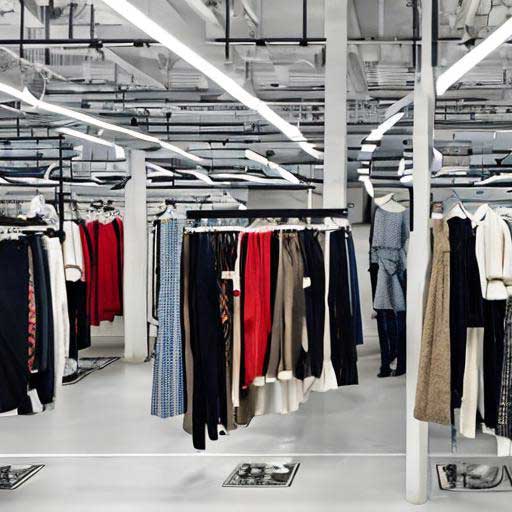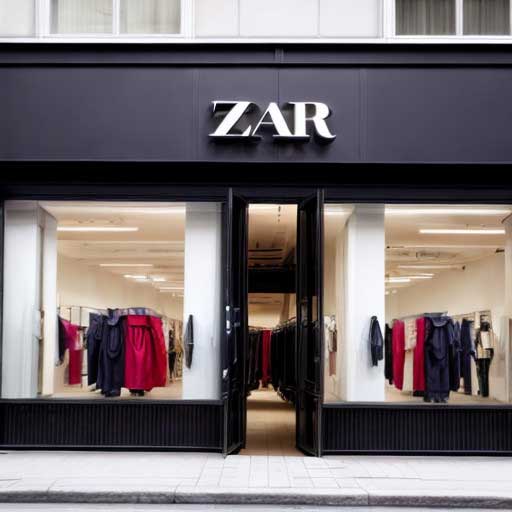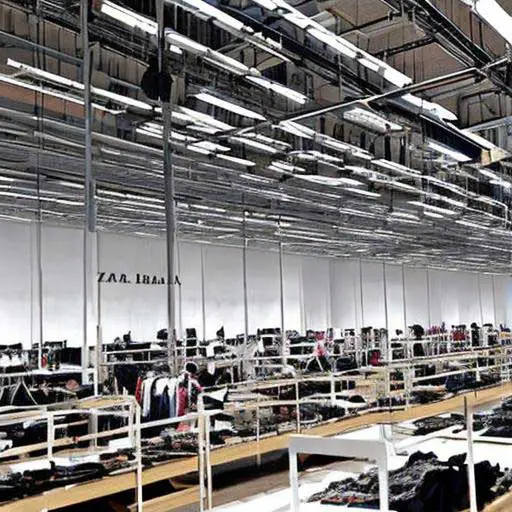Where are Zara Clothes Made?
Zara clothes are made by the fashion company Inditex, which is based in Spain. The majority of Zara’s clothing production takes place in-house at its own factories located near their headquarters in Arteixo, Galicia. Additionally, Inditex outsources some of their production to external suppliers in Europe and Asia.
Some of these countries include Portugal, Morocco, Turkey, India, Bangladesh and China. All together there are over 1,700 stores spread across 88 different countries worldwide with more than 7400 suppliers helping produce Zara’s clothes .
Zara is a Spanish fashion retailer that produces clothing collections in factories located around the world. While Zara’s headquarters are based in A Coruña, Spain, their clothes are manufactured mainly in Europe and Asia. In Europe, factories are located throughout Portugal, Turkey, Morocco and Romania.
Additionally Asian countries such as China, India and Bangladesh produce many of Zara’s products for global markets.
Who Manufactures Zara Clothing?

Zara is a Spanish clothing and accessories retailer owned by Inditex, one of the world’s largest fashion groups. The company was founded in 1975 by Amancio Ortega and Rosalia Mera. Zara produces clothing for both men and women that are designed to be fashionable yet affordable.
All of their clothes are manufactured in Europe, with the majority being produced in Spain and other nearby countries such as Portugal, Romania, Morocco and Turkey. In addition to traditional manufacturing facilities, Zara also operates an extensive network of small workshops which specialize in quick production processes that allow them to deliver new styles within weeks rather than months like most other fashion brands.
Where are Zara Factories?

Zara factories are located in several countries around the world, including Spain, Portugal, Morocco, Turkey, India and Bangladesh. In 2018 alone, Zara operated 822 stores worldwide with a production capacity of over 1.2 billion garments per year. The majority of Zara’s factories are located in Europe—around 85 percent—with most of these concentrated in Spain and Portugal.
However, the company is increasingly looking to Asia for some of its manufacturing needs due to lower labor costs and a larger pool of workers available there. For example, about 10 percent of Zara’s current production takes place in Pakistan and almost 7 percent is made up from Chinese factories.
Where Does Zara Get Their Material From?
Zara sources their material from all over the world. They source materials from suppliers in Spain, Portugal, Turkey, India and China. Zara has a team of experts who travel to these countries to ensure that the quality of fabrics used is up to their standards and meets ethical requirements.
The company also focuses on sustainability when selecting its fabric suppliers by ensuring they adhere to environmental regulations. In addition, Zara works with fair-trade organizations in order to make sure that workers are paid living wages and treated fairly throughout the production process.
Where are Zara Clothes Shipped From?
Zara clothes are shipped from warehouses all over the world, including locations in Spain, Portugal, and China. The company has a vast distribution network that includes more than 200 stores in 40 countries. Zara also offers online shopping with delivery to over 90 countries worldwide.
Orders placed through their website are typically shipped from one of their logistics centers located in Europe or Asia depending on availability and stock levels. Tracking details will be sent by email once an order is received so customers can follow the status of their shipment closely.
World’s Top Exporter of Clothing – Made in Bangladesh
Zara Supply Chain Problems

In recent years, Zara has faced a number of supply chain problems due to its rapid growth. These have included difficulty in sourcing raw materials and components, difficulty in meeting customer demand for new products, increased lead times for orders, and lack of visibility into the entire supply chain. In response to these issues, Zara is taking steps to improve their supply chain such as adopting RFID technology, improving forecasting accuracy and data integration across the organization.
By addressing these challenges head on and investing in technology solutions that enable greater visibility and control over their operations they can ensure a smoother running business model that meets consumer demands while still providing value.
Zara Distribution Strategy
Zara’s distribution strategy is built around a rapid response model, which allows them to quickly respond to consumer demand and rapidly produce new styles of clothing. This approach has enabled Zara to stay ahead of the fashion curve by introducing new designs into their stores every two weeks, ensuring customers always have access to fresh styles. Additionally, Zara operates its own logistics network that allows it to control the entire supply chain from production all the way through delivery — allowing them to get garments from factory floors directly into stores in just 15 days.
Zara Suppliers List
Zara is a highly successful Spanish clothing and accessories retailer owned by Inditex. The company produces an extensive variety of products including apparel, shoes, bags, and jewelry for both men and women. To ensure high-quality production of its goods, Zara has established relationships with over 1,800 suppliers in more than 50 countries around the world.
This includes well-known names such as Levi Strauss & Co., Hanesbrands Inc., Mango S.A., GAP Inc., PVH Corp., Asos Plc and many others. By maintaining these partnerships with reliable suppliers worldwide, Zara can maintain its reputation for providing excellent quality garments to customers at affordable prices.
Zara Manufacturing Process

Zara, the world-renowned clothing company, has mastered a unique manufacturing process that allows them to quickly produce high quality garments. Their vertically integrated production system is designed to reduce lead times and increase efficiency by controlling all aspects of the production cycle from design and sourcing of materials to distribution and delivery. This enables Zara to rapidly respond to trends and customer demand while still maintaining a premium level of quality in their products.
Conclusion
In conclusion, Zara is making strides in their commitment to sustainability and production transparency. It’s clear that the company produces clothing on a global scale, with factories located in countries around the world. From Spain to India, Bangladesh to Vietnam, Zara is ensuring that their clothes are made responsibly and ethically.
By continuing to prioritize safety standards and providing fair wages for factory workers, Zara can continue its success as one of the leading fashion brands in today’s market.

Hi, Musette Beaulieu here. Being a full time housewife makes me a geek for washing and drying clothes. Who doesn’t love fresh smelled clothes? Carry on with me, I hope you get what you seek in this clothes drying journey.
